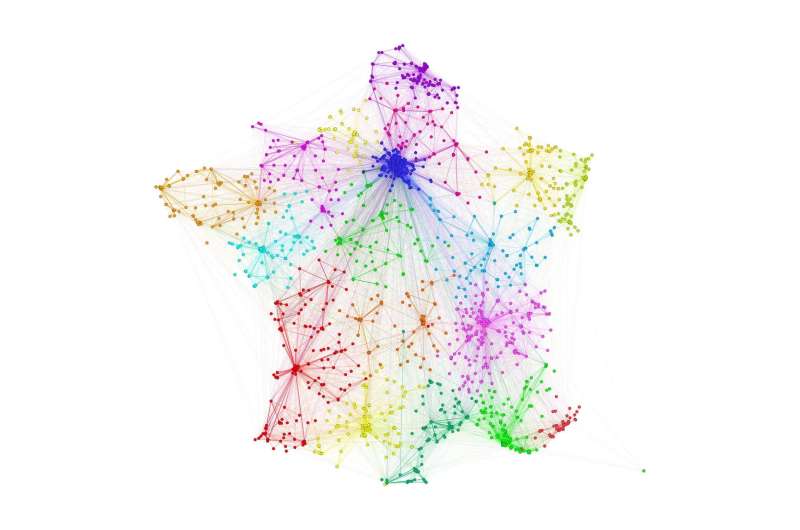General patient infections transferred similarly to hospital-acquired infections

A new study shows that the networks formed by patterns of patient transfers between hospitals in France are very similar among three patient populations: those diagnosed with hospital-acquired infections (HAIs), those with suspected HAIs, and the general patient population. The research, published in PLOS Computational Biology, could help inform efforts to reduce the spread of HAIs.
Previous research has revealed the importance of studying HAIs not just in individual hospitals but also in the context of larger networks formed by transfers of the general patient population among healthcare institutions. Such networks can help predict HAI spread. However, it was unclear whether more focused networks formed by transfers of patients diagnosed with HAIs could provide new information.
In the new study, researchers from Conservatoire National des Arts et Métiers and from the École des Hautes Études en Santé Publique addressed this question. The scientists assembled data on all patient discharges from hospitals in France for the year 2014. They used social network analysis methods to analyze the structure of the networks formed by transfers of patients with HAIs, those with suspected HAIs, and the general patient population.
The team found that the only major difference between the three types of networks was their size; about 1 million transfers occurred in 2014, with about 130,000 involving patients suspected to have HAIs and 14,000 diagnosed with HAIs. Otherwise, the team was surprised to find, all three networks showed similar patient transfer patterns and similar underlying structure, often centered around university hospitals.
The analysis echoed the findings of previous studies showing that most transfers occur in regional clusters, with a small percentage of inter-regional transfers. The researchers identified key transfer patterns within regions; these insights could potentially help detect and control outbreaks in their early stages before they reach highly centralized university hospitals—increasing the risk of accelerated spread of multi-drug resistant bacteria throughout the network.
"Researchers should consider our work along with the growing literature that describes the specific nature of healthcare networks in which patient transfers are centralized toward hub healthcare centers," says study corresponding author Narimane Nekkab. Such work should "consider directionality of patient movement to construct sub-regional communities to better understand patient transfer patterns at the local level."
More information: PLOS Computational Biology (2017). DOI: 10.1371/journal.pcbi.1005666


















